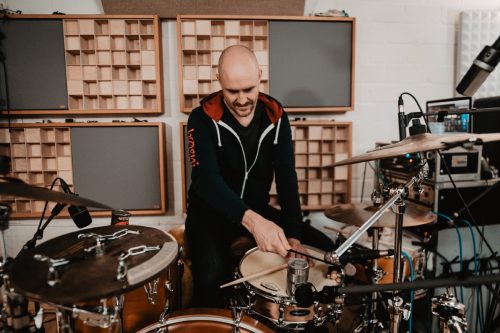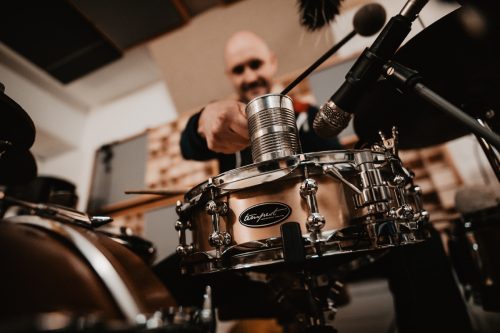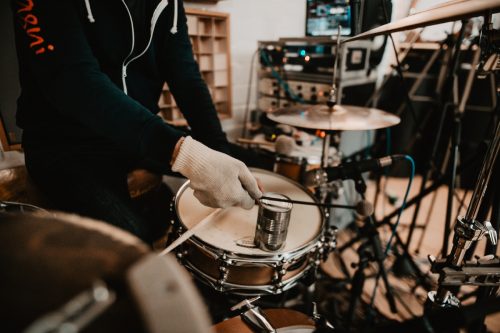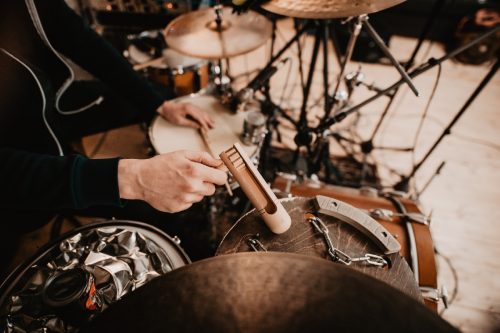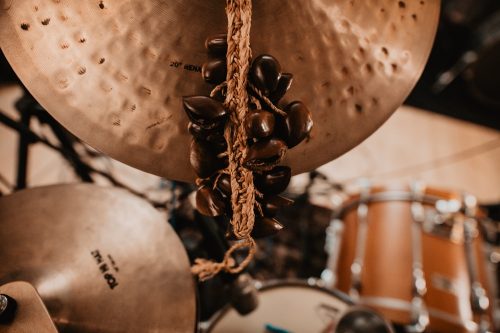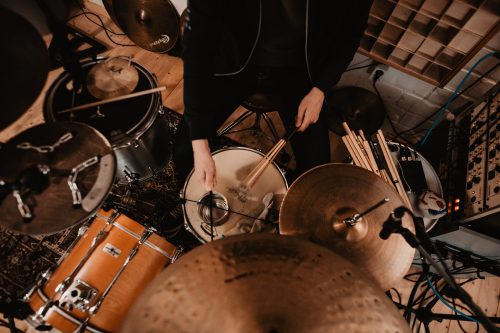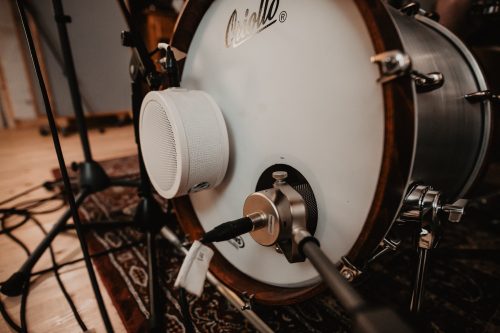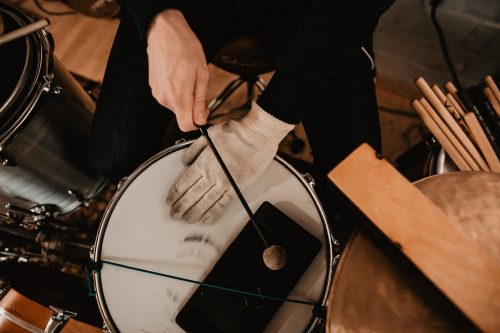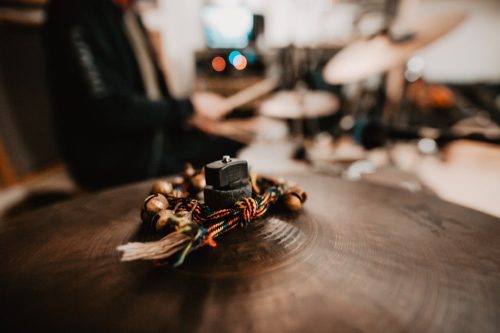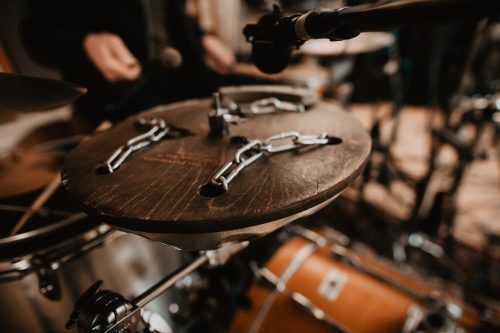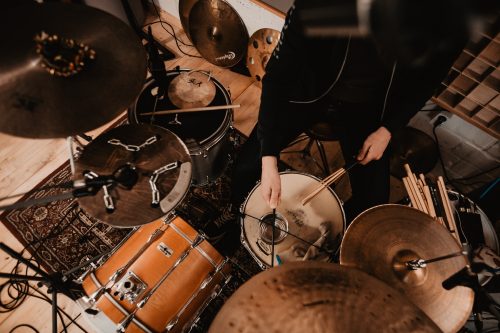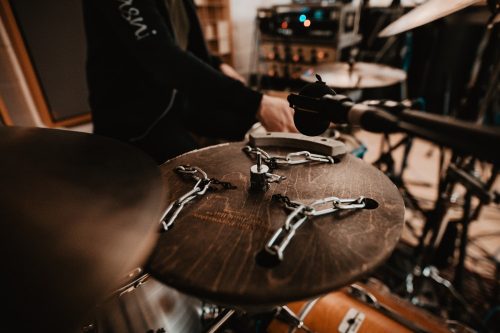The can? Yes, the can. I use cans, stones, custom made instruments, plastic boxes, ratchets, wooden things, metal things, broken and not-yet broken things to hit, scratch and smash drums, cymbals, stones, custom made instruments, plastic boxes, ratchets, wooden things…
“But that sounds like a bunch of crap!” you might say…
Almost correct, but fortunately I know how to mic, record and play those sounds. Most of the time I find the right beat even for the weirdest stuff. All of my gear is in permanent rotation, my studio never looks the same. I see it as an entity; an organic, noise-producing space.
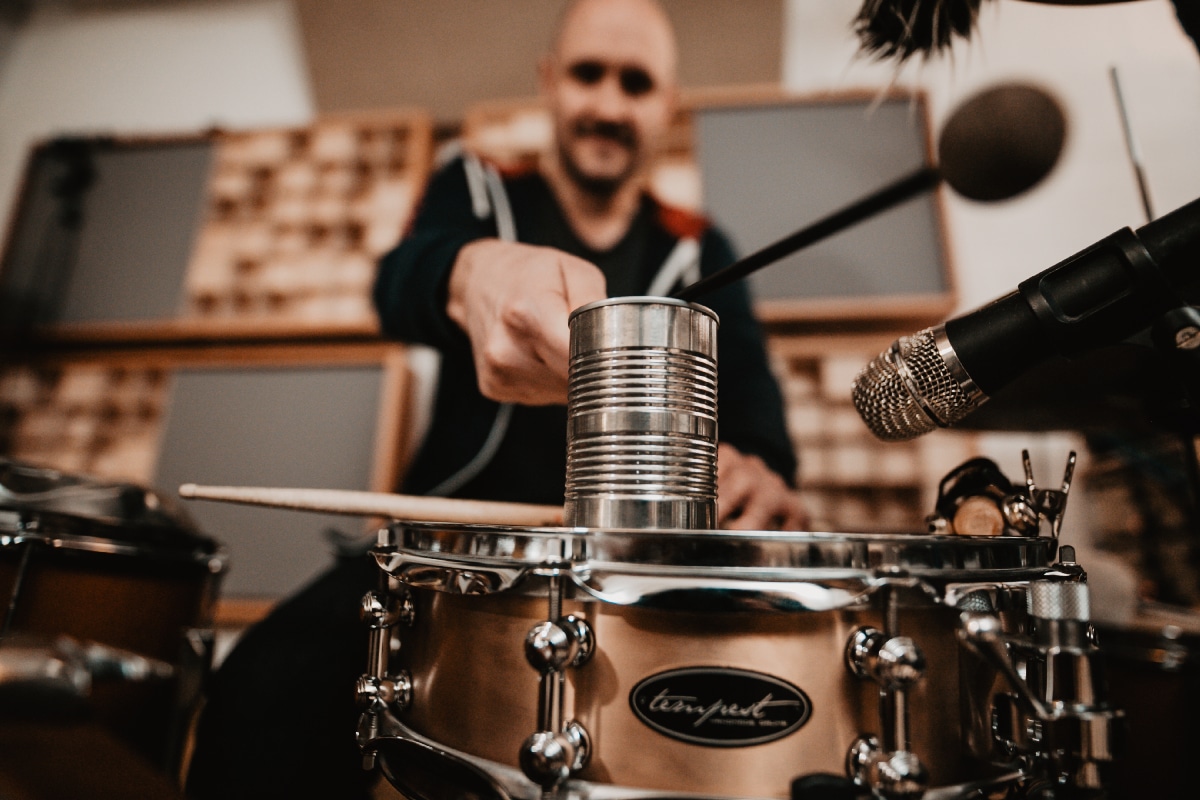
the process
1. Only natural ingredients
- Every beat you will find on this page is based on natural instruments. Things hitting things captured by microphones is what maxbeatwerk is about. The first step is choosing drums and tools from my big collection. Sometimes I find configurations that are instant magic. But most of the time it takes hours to tweak and rearrange things until everything develops into something exciting.
2. Overall sonics
- Vintage sounds are great, I love them. Many of my beats are inspired by the fat tones of the past. However, the detail, focus and a broad spectrum is what I seek with my creations. Basically, I just try to preserve and enhance what comes in via the microphones. Taking frequencies away is easier than adding them in afterwards.
3. Interlocking disciplines
- I consider my instruments, mic selection/placement, and playing as one entity. A stone on a drumhead does not sound particularly interesting by itself. It is pretty quiet and dull, especially when the rest of the kit is loud and crunchy. The magic comes with integrating the stone in a way that it becomes an integral part of the beat. The right microphones will help with isolating the source. But most importantly, the beat itself has to be punchy and unique.
4. Space, texture and natural gates
- Quiet sounds need space to shine. Many notes on a big, aggressive sounding bass drum won't go well with mallets hitting an empty nut can. For a big sounding result, balancing energy, transients, and sustain of all the components is important. Playing dynamics, distributing patterns on different surfaces, and adding natural gates is my ticket to tailoring my beats.
5. In the box
- While I strictly use real instruments and old school preamps during recording, I keep the production “in the box.” It is the only way for me to efficiently proceed to where I want a beat to sit sonically. A handful of plugins do it for me (though I never edit my beats with time alignment plugins).
6. Paul!
- After my work is done, mastering engineer Paul Baerwald takes over. Paul not only masters sound and spoken word for big companies like BMW, Audi, Puma, and many others, he is also an accomplished DJ, FOH-engineer and hiphop-producer. He is also my studio neighbor and good friend, which makes things even easier.


